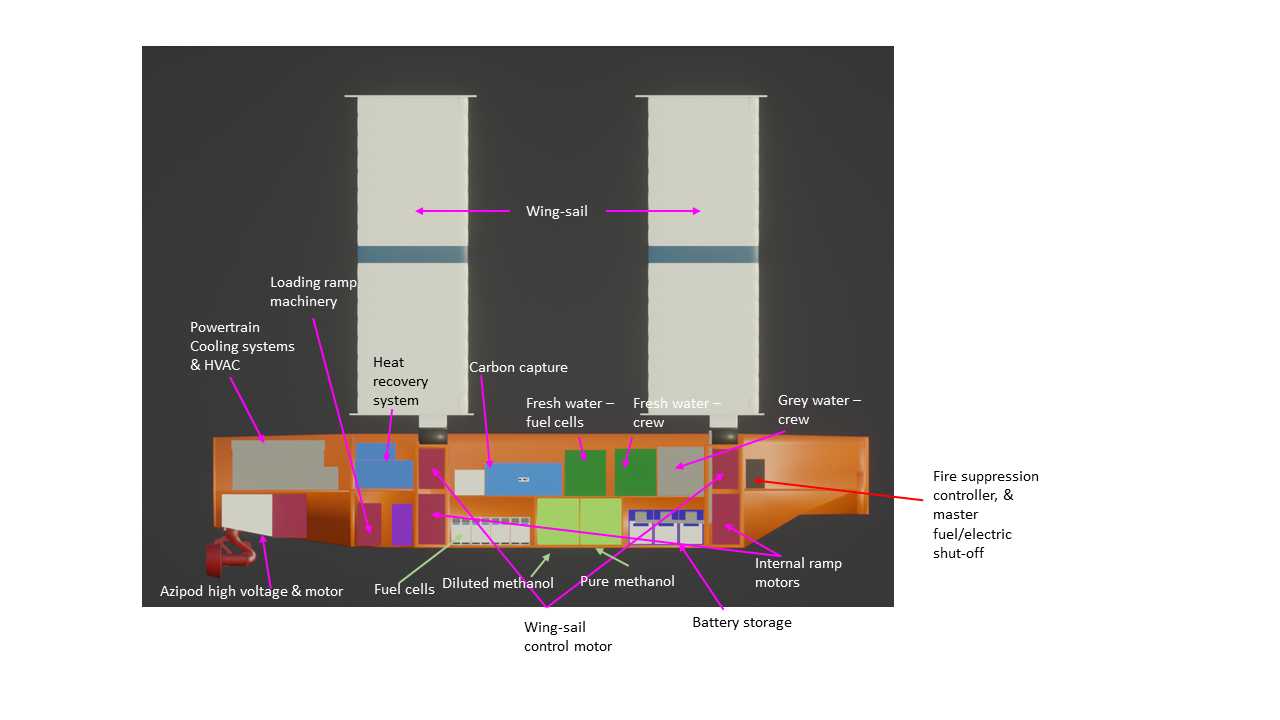Flip the script: Shipping’s approach to novel technology
Is shipping’s cautiousness over investing in innovative solutions stifling the industry?

Given shipping’s unavoidable mandate to meet fast approaching green targets, many would expect rising innovation and investment in new technologies. However, according to the International Energy Agency, maritime’s research and development spending between 2007-2019 has remained stagnant, lagging far behind other sectors. In contrast to the automotive sector, where spending on R&D increased from 67 billion USD in 2009 to 130 billion USD in 2019, maritime spent just 1.6 billion USD.
Some blame can be attributed to a lack of strong government support and progress with incentives like global market based measures. But part of the problem may lie with shipping’s overly cautious approach to new technologies.
Robert Palin, a former Tesla employee, has taken a radical approach to shaking up industries, inspired from his time working with one of the world’s most famous disruptors, Elon Musk. Palin is now applying what he learnt at Tesla to shipping as MD of Spaera, a green shipping technology start-up. The team have developed a novel, green car carrier design that he says is a “truly zero emission vessel” and seeks to help green the automotive logistics chain in the process.
“Just like with electric cars, if you take a petrol car, take all the petrol bits out and put batteries where the engine should be, what you get is a pretty rubbish electric car,” explains Palin. “If you design it from scratch to be an electric car, it’s in a different league entirely.”
As such, Palin decided to design a green ship from scratch. The result, which has been assessed with a 308-page naval architect report to “back up the physics”, combines solar, battery, wind, carbon capture and hydrogen fuel cells, along with ambient energy harvesting, smart energy management and intelligent routing support. Much of the technology, he says, already exists elsewhere, and it is about bringing it together and adapting it for maritime use. The wind propulsion and smart weather routing comes from start-up Smart Green Shipping, the carbon capture system from two brothers in Scotland who run a business connecting local farm waste to local distilleries and food producers and the fuel cells from the defence sector.
In explaining the technology used onboard the SPAERA vessel, Palin has often been met with derision from the maritime industry. He noted, he nearly got “laughed off stage” by a shipowner at a conference for suggesting wind power as a viable solution. “It’s the same mentality that we saw with electric cars. As soon as we started to say, we’re going to have electric cars, people lost their minds,” he says.
However, Palin is far from blind to the systemic issues that make adoption of new technology in maritime slow, from the lack of onshore infrastructure to the 25 year-life span of vessels. However, for him, as it is with Elon Musk, it is about demonstrating what is possible to stimulate change. “I liken it to being the first person on the dance floor. We go out and we bust a move and that gives people the confidence to join us,” Palin expounds.
To drive real change, maritime needs to adopt similar principles to that of the electric car market, says Palin, noting that Tesla now largely hires people without previous car experience as “they come in and do things the way they’ve always been done”.
A lot of the solutions are already out there, Palin stresses, as long as people are willing to look broadly enough. Warming to his dance floor analogy, he explains: “it’s almost like turning on the lights in the nightclub and finding the dance floor is actually full already. Just your bit was empty.”
“It is going to take a tectonic shift to get the shipping industry to adapt to climate change and adopt zero carbon options.” Mike Poole, Director, AutoNaut
The question is, will maritime work with emerging providers to collaborate and push forward innovation together, or continue with traditional models of working and risk being outpaced?
Cautious approach
Technology acceptance boils down to risk appetite for many companies, says Mike Poole, Director of technology start-up AutoNaut, a company that has developed an unscrewed surface vessel (USV) propelled by the motion of the waves. “Commercial shipping is hugely conservative, and rightly so because the sea is a very hostile environment,” he says. “It is going to take a tectonic shift to get the shipping industry to adapt to climate change and adopt zero carbon options.”
The answer, Poole feels, may lie in new technologies. “We keep a constant watch on battery development through the Faraday initiative and UK Research and InnovationI, Innovate UK and Knowledge Transfer Network contacts. This is what we really need for very long endurance operations is energy harvesting on the fly.”
His company’s USV, powered by the waves and PV panels charging Li batteries, deploys a wide range of sensors and can be sent out on “very long missions” into the open ocean, controlled via satellite. It has been used so far in case studies with oil major BP to measure the noise of offshore drilling, hurricane forecasting and support in the detection, interception and capture of threats for a port.
AutoNaut collaborates with oil and gas, offshore and wind, defence and space sectors, as well as universities and research institutes to push forward its technology. Glaringly absent from this list is merchant shipping. Unlike smaller and leisure vessel businesses which Poole says are more open to supporting “radically innovative technologies”, he hasn’t seen any interest from merchant shipping.
This is ultimately to shipping’s detriment, believes William Gault, Business Incubation Manager, UK, at the European Space Agency, which supports innovative early-stage space technology businesses to grow and develop.
Although he acknowledges how challenging it is for companies to track developments outside their sector, he maintains that “there’s a huge number of technologies that are developed for use in space or come from space and can be applied to other industries.”
He feels that technology from start-ups could easily be applied to improve vessel security, such as prevention of GPS spoofing and protection from remote blocking and jamming of onboard systems, and SAP comms security solutions to encrypt and protect data from cyber hacks. Satellite communication enabled remote maintenance systems could also be applied to ensure onboard systems are working properly. Gault points out that there is growing work on Earth observation that can be used to better predict local weather environments to optimise vessel routes and fuel consumption.
“A little bit of investment of time and focus in startup communities can pay huge dividends long-term.” William Gault, Business Incubation Manager, UK, at the European Space Agency
Vitally, he says, tracking and engaging with companies developing disruptive technology in areas of interest for your operations, can deliver huge benefits. Adopting new technology can provide unique customer advantages, improve the bottom line and help companies gain a competitive edge in growing market share in a new technology.
Particularly desirable, he added, is developing a commercial relationship that could result in favourable licensing or even exclusive licensing agreements, all without taking on the risks of developing the technology yourself. The outlay doesn’t even have to be financial. Rather, companies can provide “light touch” support such as industry guidance, advice, or a letter of support.
“A little bit of investment of time and focus in startup communities can pay huge dividends,” Gault says, adding that he has noticed a “relatively small uptick” in startups looking to directly serve the maritime community.
Related content

Reducing Greenhouse Gas Emissions: A Guide to IMO Regulatory Compliance

Stagnation in R&D investment creating unacceptable risk for industry zero emissions future

Canada and United Arab Emirates first to back maritime sector’s green fuel initiative
